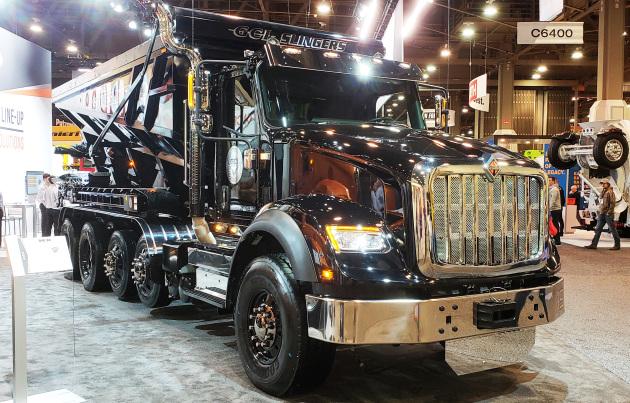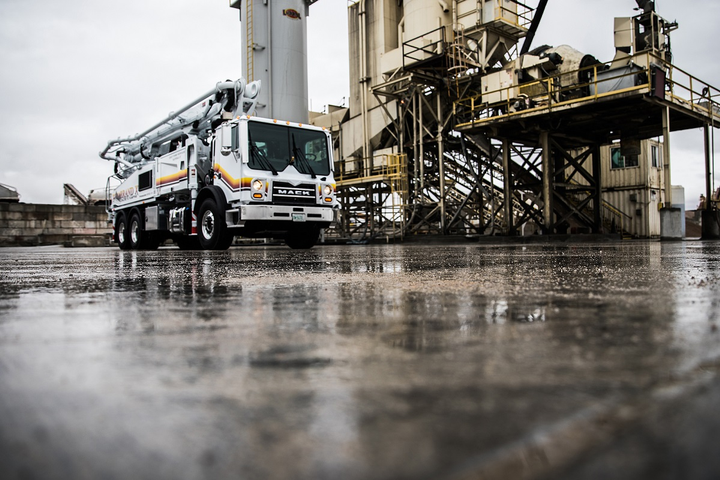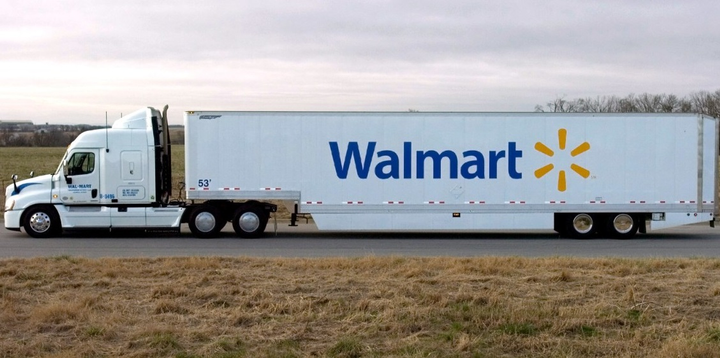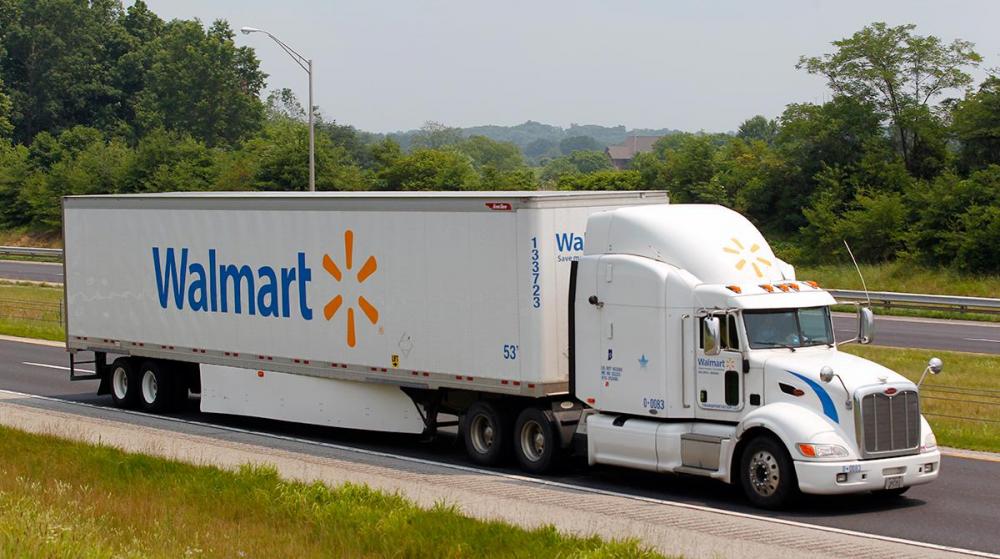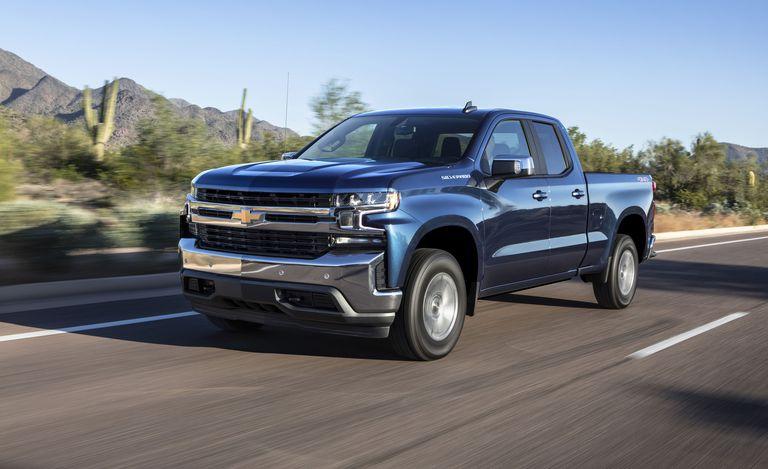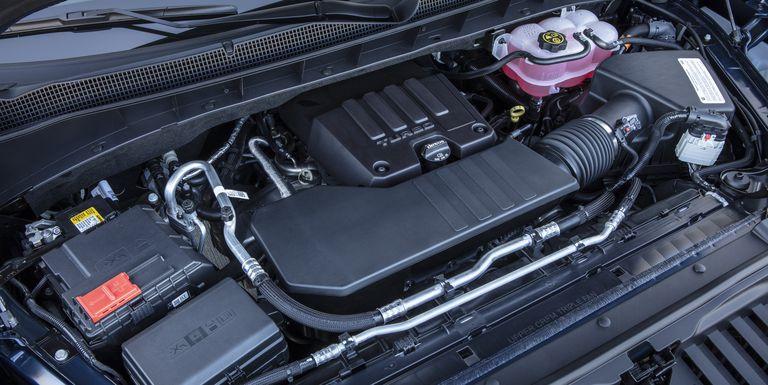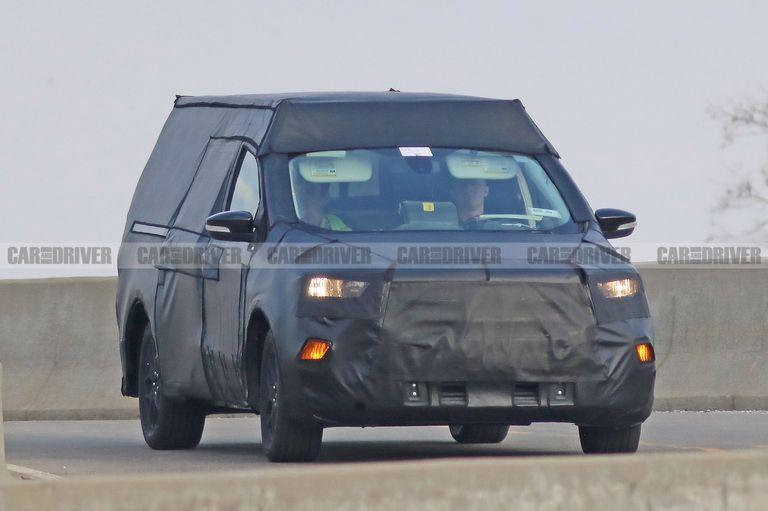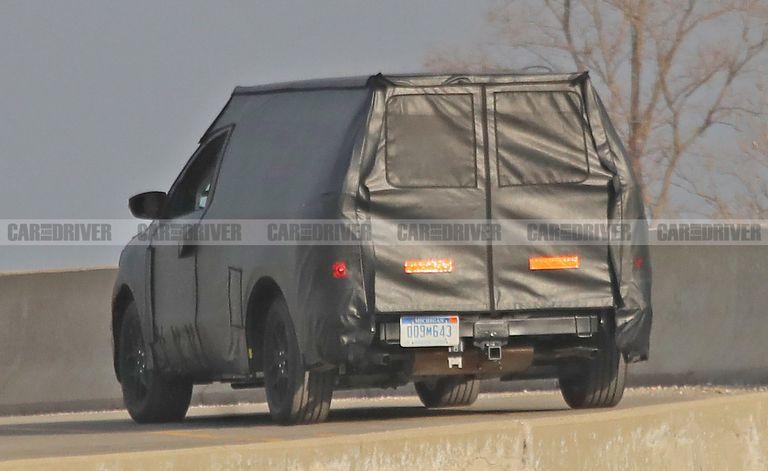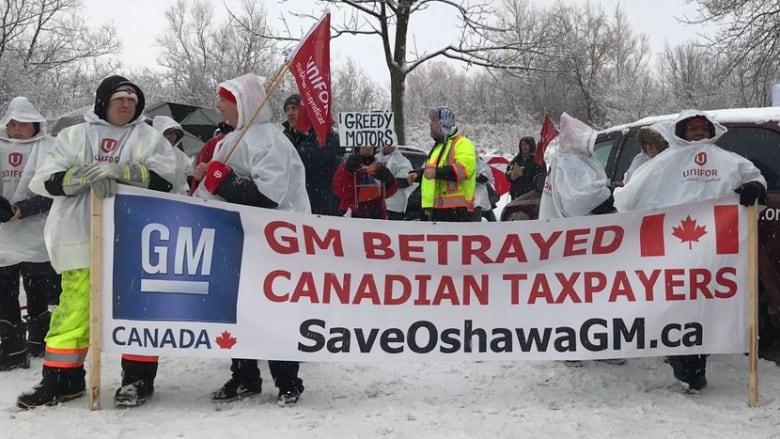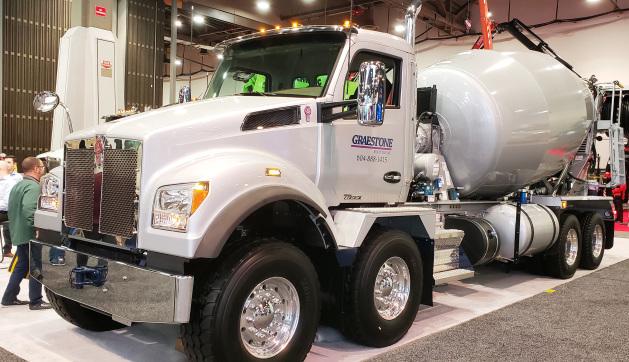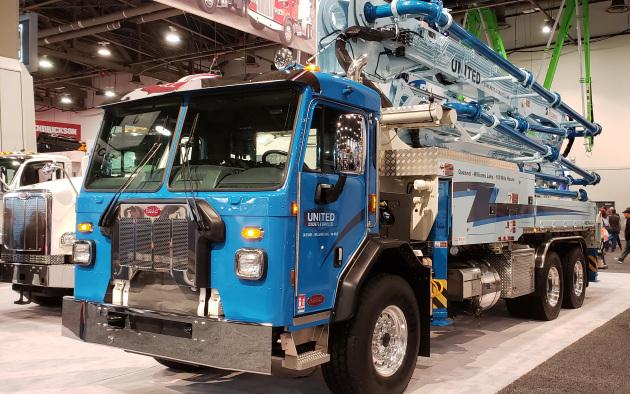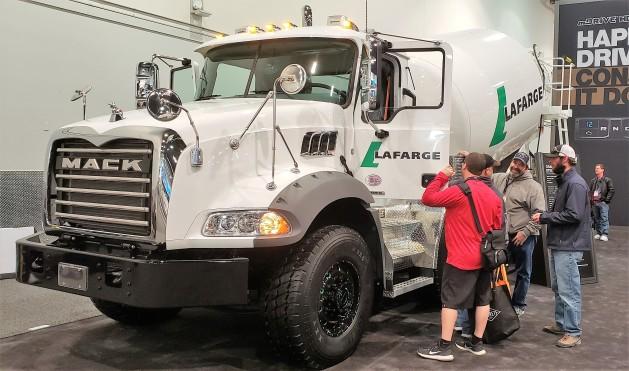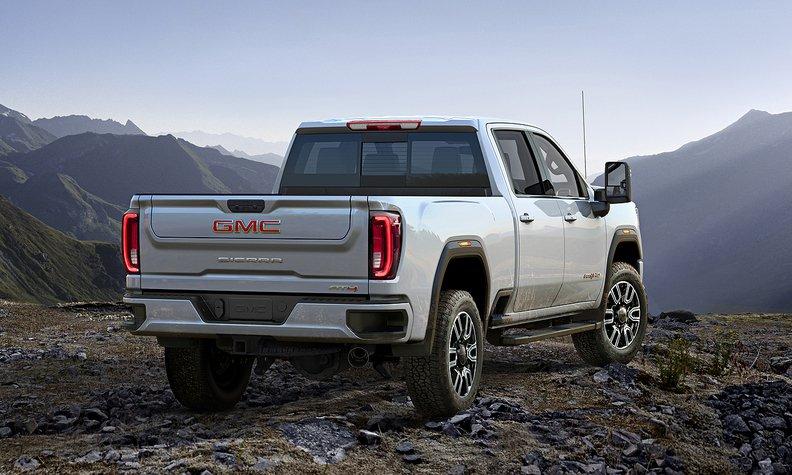
kscarbel2
Moderator-
Posts
18,547 -
Joined
-
Days Won
112
Content Type
Profiles
Forums
Gallery
Events
Blogs
BMT Wiki
Collections
Store
Everything posted by kscarbel2
-
And yet so many operators are extremely pleased with their Kenworths and Cascadias, so much so that they keep buying more. Interesting. Mack brand salesmen across the country routinely see their pricing from Volvo puts them $10,000 or more over competitive quotes.
-
If I could get the four-cylinder 2.0L EcoBlue or 2.2L Duratorq diesels available in the global market, or the five-cylinder 3.2L Duratorq diesel available in the US market Transit as well as the global market, Ford would have a customer.
-
The China market Beijing Foton-Cummins ISG arrives in America. In the Middle Kingdom, it is available in both 10.5 litre and 11.8 litre displacements, although sales are predominantly the larger of the two. It's a great and proven powertrain. Zero issues. FYI......https://www.bigmacktrucks.com/topic/40094-cummins-starts-field-testing-heavy-truck-engine-in-australia/?tab=comments#comment-290546
-
Cummins X12 Engine Now Available for Freightliner 114SD
kscarbel2 replied to kscarbel2's topic in Trucking News
-
Truck News / January 23, 2019 LAS VEGAS, Nevada – For International Trucks, 2018 was a banner year in the U.S. and Canada, and the company hopes to continue building on that success. “In Canada, it was phenomenal, we couldn’t keep up,” Joel Shaw, vocational sales manager for Navistar Canada, told Truck News-West during World of Concrete in Las Vegas. “On the International side, we grew our market share across Canada in each segment.” Shaw said Canadian sales have exploded, but not to the extent it has in the U.S., adding that they expect last year’s boom to level off a bit in 2019. Darin Vehlewald, product marketing manager for severe service trucks at Navistar, said they have been anticipating a dip in demand for some time. “For the last two years, we’ve really been ramping up, and I think a lot of people forecasting internally, as well as equipment manufacturers and even customers, (a downturn) is kind of expected,” he said. “A year-and-a-half ago we thought it was going to starting leveling off, but it really hasn’t up until the last couple of months. It’s not dipping but the rate at which it’s increasing has slowed a lot.” Shaw said the refuse market has been one of the strongest in Canada, with several businesses struggling to keep up to demand. In Western Canada, he said business has picked up slightly with oil back to around $60 a barrel, however continues to lag behind its eastern counterpart. There is one area, though, where Western Canada is booming. “The freight side of things has been crazy out there,” said Shaw, “which surprised me because oil just hasn’t been there, but freight has really picked up.” Approval of the Trans-Mountain Pipeline is one way to improve the western Canadian economy, according to Shaw. In the U.S., Mark Johnson, vice-president of strategic marketing for Navistar, could not be happier with the way his company has performed of late. “We posted incredible financial performance in 2018,” said Johnson. “One of the reasons we did is that we are winning the trust of our customers back. Customers are putting their faith in us once again, and really that goes to the tremendous product line that we have today.” Johnson said Navistar boasts the industry’s newest and most comprehensive lineup of vocational trucks. “No other manufacturer has a breadth of coverage of vocational, particularly in construction and concrete,” he said. “There’s a little bit of momentum in this business right now, and I will tell you in the construction and concrete markets, last year we grew our market share by nearly two points.” In addition to regaining the trust of its customers, Johnson said the company’s focus on uptime and its driver-first mentality has led to its recent success. .
-
- 1
-

-
Kenworth, Peterbilt, Mack showcase offerings during World of Concrete
kscarbel2 replied to kscarbel2's topic in Trucking News
Mack mDrive HD Transmission Coming to TerraPro Concrete Pumper Models Heavy Duty Trucking (HDT) / January 23, 2019 [Volvo Group subsidiary] Mack Trucks will offer the mDrive HD [the Mack badged version of the Volvo i-Shift] automated manual transmission (AMT) in Mack TerraPro concrete pumper models beginning in 2019. Mack says the fully integrated 12- and 14-speed mDrive HD AMTs will improve performance and offer durability and uptime benefits in an easy-to-operate package. All Mack mDrive HD AMTs come standard with split-shaft PTO functionality. Instead of taking power from a transmission- or engine-mounted PTO, split-shaft PTOs receive output directly from the transmission, supplying higher torque for large auxiliary equipment including concrete pumps. “The mDrive HD is the only AMT available with split-shaft PTO functionality, which enables us to offer concrete pumper customers all the benefits of the mDrive HD and our fully integrated powertrain,” said John Walsh, vice president of marketing for Mack Trucks. “In addition to improved performance and productivity, the mDrive HD helps increase jobsite safety. Eliminating traditional shifting allows drivers to focus on safely operating their equipment.” In TerraPro concrete pumpers, the mDrive HD will be paired exclusively with the 11-liter Mack MP7 engine, and will be available with higher horsepower and torque ratings than equivalent models with conventional automatic transmissions. That includes the MP7’s top rating of 425 hp and 1,560 lb.-ft. of torque. The mDrive HD for TerraPro concrete pumper models is available as a 13-speed direct drive or overdrive, as well as a 14-speed direct drive. With ruggedized internal components, including stronger gears and synchros, the mDrive HD is built to withstand the frequent shifting often found in construction applications. The 13- and 14-speed variants also feature low-ratio creeper gears, offering improved startability and ultra-low speed maneuverability. All mDrive HD AMTs feature a transmission-mounted oil cooler to help maintain optimal operating temperatures, even in the face of repeated, heat-generating shifts. The transmission also includes advanced standard features like Rock Free, which allows drivers to free stuck vehicles by rocking the truck back and forth simply by pumping the accelerator, and Auto Neutral, which improves jobsite safety by automatically putting the mDrive into neutral when the parking brake is set. Additional features like Grade Gripper, which helps prevent rolling backward on an incline, are also included, as well as MaxBrake, and Performance Mode. The Mack mDrive HD in Mack TerraPro concrete pumper models will be available for order in February 2019. . -
Walmart Says It Needs 900 More Truckers This Year, Hikes Pay
kscarbel2 replied to kscarbel2's topic in Trucking News
Walmart Increases Pay for Private Fleet Drivers Heavy Duty Trucking (HDT) / January 23, 2019 Walmart has announced pay increases for truck drivers in its private fleet that includes an increase to per mile pay and activity pay. Beginning in February, drivers will receive a 1-cent per mile and a 50-cent increase in activity pay for arrive and arrive/drop occurrences. With the increase, Walmart’s drivers would be paid up to $1 for every time they arrive at a destination and drop a trailer. In the Northeast region, Walmart is also offering a 5% premium on mileage and eight different activities. Walmart says its drivers can earn an average of $87,500 in their first year of employment with an all-in rate of nearly 89 cents per mile. Furthermore, in the Northeast region, Walmart is offering a 5 percent premium on mileage and eight different activities. The new pay initiative is part of the company’s push to improve recruiting and retention in its professional fleet and Walmart says it is seeing an increase in referrals from its current drivers. The company has also revamped its hiring and onboarding program to shorten the application and onboarding time by over 50%. “Truck drivers are a critical part of our team here at Walmart and have been since Sam Walton started the private truck fleet in the 1970s,” said Greg Smith, executive vice president of Walmart U.S. Supply Chain. “Our professional drivers are part of what makes Walmart so special. This wage increase reflects the importance of our private fleet and our commitment to recruiting and retaining the best drivers in the industry.” . -
Maria Halkias, The Dallas Morning News / January 23, 2019 Walmart is raising trucker salaries in its push to hire 900 more drivers this year across the United States, including Texas, where it has a big concentration of large distribution centers where empty trucks get filled. Companies are competing for the best drivers as a shortage of truckers in the United States continues. Walmart is promising more predictable scheduling to be conscious of work-life balance and said it has shortened the time from application and starting work. Last year, it also started a $1,500 referral bonus. In the latest hiring push, Walmart’s driver wages will rise by $14 million from a combination of a per-mile increase, activity and drop-off pay. That’s an average annual salary of $87,500 and 21 days of vacation in the first year. There also is potential for safety bonuses. Applicants must have at least 30 months of full-time commercial driver experience with no serious traffic violations in the past three years. “This wage increase reflects the importance our private fleet and our commitment to recruiting and retaining the best drivers in the industry,” said Greg Smith, executive vice president of Walmart’s U.S. supply chain. Walmart has had its own trucking fleet since the 1970s, when Sam Walton was putting together what was considered the most sophisticated of retail supply chains. The company’s 8,000 drivers travel more than 700 million miles and deliver to 4,700 Walmart and Sam’s Club stores. The trucking industry reached a 20-year peak for tonnage hauled in 2018. American Trucking Associations estimates the industry, which has 3½ million drivers, is short more than 50,000 drivers. .
-
The Four-Cylinder Chevrolet Silverado Got Worse Fuel Economy Than the V-8 in Our Test K.C. Colwell, Car & Driver / January 22, 2019 Here's more proof that downsizing and turbocharging have their limits. Small gains in the efficiency of a heavy, wind-catching pickup truck result in a sizable percentage swing. Take two versions of Chevrolet's new 2019 Silverado 1500, for example. One is powered by the equally new turbocharged 2.7-liter inline-four and the other has an updated 5.3-liter V-8; both engines are paired with General Motors' eight-speed automatic transmission and a four-by-four transfer case. The largest font on their respective window stickers belongs to the EPA's combined fuel-economy estimate: the 2.7 boasts a big 20 mpg, while the tried-and-true small-block posts a score of 18 mpg. These 2 mpg represent an 11 percent improvement for the 2.7. "Actual results will vary for many reasons" is among some of the smallest print. On the highway cycle, however, the EPA says the trucks should get an identical 22 mpg. For all the chest pumping that manufacturers do over downsizing and turbocharging, we found it curious that a pushrod V-8 could even come close to challenging it in any area of efficiency. So, since we recently had a Silverado 2.7T, specifically a Double Cab in RST trim, in the office, we ran it on our 75-mph highway fuel-economy test, which we call the "HFE test" for short. We couldn't have been more shocked by the result. The 2.7T averaged 18 mpg over the 200-mile test, a 14 percent drop from the 21 mpg we observed in the 5.3-liter RST Crew Cab, which was a full 314 pounds heavier. How is that possible? you ask. Our real-world test runs vehicles at relatively high speed, and while the downsizing and turbocharging approach is a benefit to the EPA test cycles, the 2.7 still needs to move a brick through the air. We suspect it is on boost or making use of the turbo at 75 mph. The exact opposite—the engine essentially operating as a naturally aspirated four-banger—is probably true during the 48-mph EPA highway test cycle. The 5.3 also benefits from some fancy bit of tech that GM calls Dynamic Fuel Management, which is capable of running 17 different ignition cycles to maximize fuel economy. Yet another inner-GM ego blow comes in the form of a GMC Sierra 1500 Denali we evaluated during this year's 10Best Trucks and SUVs competition. Despite its 6.2-liter V-8 having more than twice the displacement and 110 additional horsepower—it also gets a 10-speed automatic rather than the 8-speed—the Denali managed to tie the 2.7T's 18-mpg HFE result. The only half-ton pickup we've tested that has done worse on the HFE test is a 2017 Toyota Tundra SR5 fitted with the TRD Off Road package. It got 17 mpg. Even the Ford F-150 Raptor matches the effort of the Silverado 2.7T. All this talk of the worst begs the question, which truck is the best? For all pickups we’ve tested to date, that honor goes to both the Honda Ridgeline and the diesel-powered GMC Canyon, each of which got 28 mpg. The best half-ton result was 26 mpg, owned by a Ford F-150 Crew Cab 4x4 with the 3.0L V6 diesel. It is worth noting that GM's 2.7-liter isn't the last engine it's releasing for the new half-ton siblings. There is a 3.0-liter diesel inline-six coming that should challenge the F-150 and maybe even those mid-sizers for the pickup crown of HFE. When and if it does, we'll let you know. .
-
Ford Exec Confirms a Small Pickup Is Coming That Will Slot beneath the Ranger Andrew Wendler, Car & Driver / January 23, 2019 Return of the Ford Courier small pickup? Jim Farley, Ford president of global markets, has confirmed that the company is working on a new compact pickup that will slot in Ford's lineup below the Ranger. According to a report in Automotive News, Farley made the remarks while speaking at the Deutsche Bank Global Auto Industry Conference in Detroit. Farley said that Ford is "investing in more affordable versions of our truck business" and added, "You can expect new nameplates below where we compete today." This news dovetails nicely with our earlier report that Ford was planning a subcompact pickup to fill the physical and spiritual void left by not only the car-based Ford Courier small pickup, which was sold in countries such as Brazil and Mexico, but also the Mazda-based compact pickup truck that Ford sold in the United States throughout the 1970s and early 1980s. While we still don't have confirmation on markets in which the new compact pickup will be sold, C/D recently acquired this set of spy photos of a heavily camouflaged small vehicle testing in Michigan. The photographers insist that the vehicle, although clad to resemble a small van, is a small, car-based pickup truck. Additionally, Ford recently applied to trademark the Courier name with the United States Patent and Trademark Office. As we reported earlier, the new model will share its underpinnings with the latest global Ford Focus compact car. A hybrid model is a possibility. The market for pickups of any size has never been hotter, and if Ford wants to capitalize on the current demand, it'll want to start dropping official teasers as soon as possible. .
-
Mack of course used to dominate construction. No more. We've all seen entire fleets switch to Kenworth and other over the last 6 years. And now, we're seeing dual Volvo/Mack brand dealers promoting Volvo product instead of the Mack brand. The writing is on the wall. The DAF-designed Paccar MX engine is a great engine in the global market. Set up for US emissions, I haven't heard of any serious complaints. I know many satisfied KW vocational (e.g. dump) operators running ISX12s in their trucks.
-
GM Canada HQ blocked by Unifor in protest of Oshawa decision John Irwin, Automotive News / January 23, 2019 TORONTO — Unifor members on Wednesday morning formed a blockade outside of General Motors’ Canadian headquarters in Ontario, to protest the automaker’s plans to end production at the nearby assembly plant in Oshawa. Unifor President Jerry Dias said the union’s members would prevent GM Canada employees from entering the building. The move is in response to GM’s plans to stop allocating products to Oshawa Assembly beyond 2019. “GM headquarters will be down and it will stay down,” Dias said. “This is going to become a very major community initiative for us.” David Paterson, GM Canada vice president of corporate and environmental affairs, said GM employees would work from home Wednesday and that the company’s operations would be unaffected. He estimated about 700 GM employees work at the Oshawa headquarters. “We have the ability to work from home or at other locations, so we won’t be affected,” Paterson said. “We’ll have planned for this and have alternate arrangements.” ESCALATING PROTESTS Unifor’s action is the latest in an escalating feud between the union and GM. Unifor has undertaken an international campaign to save the Oshawa plant, taking out advertising in Canada and the United States and staging protests that briefly halted production at the factory and at one of its nearby suppliers. GM Canada, meanwhile, has taken to social media to refute claims by Unifor that the company is moving the Oshawa jobs to Mexico and has repeatedly urged the union to work with it on securing new jobs for workers. The war of words continued on Wednesday afternoon. During a news conference at the blockade, Dias said Unifor’s actions would happen on an ongoing basis at different GM facilities and suppliers. “What is happening here today is going to happen tomorrow,” Dias said “It’s going to happen on Friday. It’s going to happen at different locations, General Motors. We’re going to see you at the [Detroit] auto show that runs until the 27th. The simple reality is that we’re not going to stop.” Dias said Unifor's actions would not include an outright boycott of all GM products. "I'll never call for an outright boycott," Dias said. "Our members in Ingersoll make the incredible Equinox. Our members that work in St. Catharines provide powertrains for so many different vehicles that are sold in the United States. "But I have a real problem with the Mexican vehicles that GM thinks it can just dump on the Canadian and U.S. market. I'll leave it at that." In an interview following Dias’ press conference, Paterson downplayed the significance of the blockade and said he “felt bad” for Unifor members who have stood in cold, snowy and rainy conditions. “There’s nobody in the building today,” he said. “Basically, it’s a protest outside an empty building. I think the urgency, given that, is probably overstated.” Paterson said GM Canada considers Unifor’s blockade to be illegal, and the automaker could consider taking legal action in response. He said GM has asked local police to stop protesters from blocking the road to the headquarters, though he was unaware as of Wednesday afternoon if the company had filed for an injunction. “I believe this is an illegal action, so we’ll see how long they’re there,” Paterson said. “I honestly don’t know what our legal staff will do on that, but I presume from experience where Unifor has done this before, generally it’s agreed it’s an illegal action. In past instances, where they’ve done this before, there have been injunctions that have been secured. An Ontario Superior Court judge ruled in 2008 that a nearly two-week blockade of GM Canada’s headquarters by the Canadian Auto Workers, a predecessor of Unifor’s, that year was illegal. That blockade was in response to GM announcing that it would close its Oshawa truck assembly plant, which would shutter in 2009. “We’ve been saying for several weeks that we would like the union to sit down and discuss the packages that will be made for affected workers at the Oshawa plant over the next year,” Paterson said. “Until these types of actions are done, that’s not really possible until Unifor is ready to come to the table.” ‘IT’S GOING TO GET UGLY’ Dias said the blockade would be a sustained effort, lasting beyond Wednesday and again threatened to escalate Unifor’s battle with GM. “It’s going to get ugly and it is going to get ugly very quickly,” Dias said. “The bottom line is we’re not going away.” Dias said he was set to meet Wednesday morning with officials in Prime Minister Justin Trudeau’s office to discuss the Oshawa plant. He said he would urge the federal government to get more involved in its fight with GM and said he ultimately wants a meeting between himself, Trudeau and GM CEO Mary Barra. “I’m looking to get the federal government engaged immediately,” Dias said. “It’s past time.” Barra met with Navdeep Bains, the federal minister of innovation, science and economic development, in Detroit last week. Bains said he urged GM to reverse course on its Oshawa plans, though Barra said the decision was final. A Unifor spokeswoman said non-GM employees who work at the company’s Canadian headquarters will be allowed in by union members. Paterson said non-GM tenants of the building include Ontario Power Generation Inc. and cafeteria services. Oshawa Assembly is one of three North American assembly plants GM plans to stop allocating production to in 2019 as part of a larger corporate restructuring. Oshawa builds the Cadillac XTS and Chevrolet Impala sedans and does final assembly on previous-generation Chevrolet Silverado and GMC Sierra pickup bodies shipped from the United States. .
-
GM, facing losses in Brazil, seeks tax breaks in Sao Paulo state Marcelo Rochabrun, Reuters / January 23, 2019 SAO PAULO -- General Motors' Brazil unit is in advanced talks with Sao Paulo state to receive tax incentives, the company told public officials and union representatives at a meeting on Tuesday, a few days after telling workers in a memo that it was losing money in the country. GM's top executives in South America attended the meeting along with union representatives and mayors of the two cities where the automaker's Sao Paolo state plants are based. Two officials representing the two cities told Reuters GM disclosed the tax incentive discussions at the meeting. "They told us that the conversation with the state is very advanced, very positive," said Alberto Marques Filho, secretary of innovation for the city of São Jose dos Campos, where one GM plant is based and where the meeting took place. GM declined to comment. A representative for the state government said in a statement it has "been working to show the public that it is advantageous to keep the company in Sao Paulo." GM's dominance GM is the undisputed market leader for small cars and trucks in Latin America's largest economy, but it was not revealed until recently that the automaker was losing money there. Earlier this month, GM CEO Mary Barra said the company had lowered its break-even point in the region in recent years by 40 percent, but it still faced "unacceptable losses that need to be addressed." "We've begun work with key local stakeholders, dealers, suppliers, unions and government officials to take all necessary actions to generate acceptable returns in the near term or to consider other options," she added at an investor presentation on Jan. 11. Worker warnings GM posted a memo in its plants in Brazil warning workers that it had experienced deep losses in the past two years and could not keep operating that way. GM has yet to comment on the memo, which was seen by Reuters. GM, which is undergoing a global restructuring, also has announced thousands of layoffs in the United States and Canada. It also plans to shut two plants outside the United States which it has not yet identified. The automaker is also looking to negotiate future investments with its unions, the governments of cities where it operates, and suppliers, said José Auricchio, the mayor of another GM plant location, Sao Caetano do Sul. Auricchio and Marques Filho said GM had told them at the meeting that the governor of Sao Paulo, Joao Doria, had personally participated in five meetings with the automaker to discuss tax incentives. The memo added that any turnaround plan for GM would require "sacrifices from everyone." Last year, Brazil's federal government granted carmakers with local plants a 15-year package of tax breaks, extending subsidies for an industry that has struggled to compete. Economy Minister Paulo Guedes, who took office with a new government this month, has said Brazil cannot afford to keep subsidizing powerful industries, arguing that an end to protectionist policies will make the economy more competitive.
-
Ford posts first quarterly loss in 2 years Nick Bunkley, Automotive News / January 23, 2018 DETROIT — Ford Motor Co. lost $116 million in the fourth quarter, its first loss in two years, and its profit for all of 2018 fell by more than half as lower margins in North America combined with losses everywhere else in the world. The automaker said tariffs and higher commodity costs added up to a $1.8 billion hit during the year, and it took an $877 million hit to pensions and other benefit funds when financial markets tumbled late in the year. "It's not a year that we were happy with," Ford CFO Bob Shanks said. But he argued that the company "made a lot of progress underneath the surface in North America" and has begun working to fix problems in Asia and Europe. Ford CEO Jim Hackett, on a conference call with analysts and reporters, said Ford is taking “decisive action in all underperforming parts of the business” and will begin to show clear results from those moves in 2019. “We have a clear vision, we have a solid plan and we are in execution mode,” Hackett said. Most of Ford's financial metrics for the quarter were negative, save for revenue that rose 1.2 percent to $41.8 billion behind improved product mix and higher net prices. On the year, revenue rose 2.2 percent to $160.3 billion but net income fell 52 percent to $3.7 billion. Ford earned $7.6 billion in North America in 2018, 6 percent less than the prior year. That will result in an average profit-sharing payout to most UAW members in March of $7,600, which is $100 more than last year because of accounting adjustments made to last year's results. The company lost $2.2 billion in the rest of the world, with the Asia Pacific region accounting for half of the red ink. Ford lost $678 million in South America and $388 million in Europe. Ford Credit had its best result in eight years, with a profit of $2.6 billion, a 14 percent increase. Mobility expenses Shanks said spending on mobility services throughout the year amounted to a loss of $674 million, split evenly between development work on autonomous vehicles and on investments such as Ford’s purchase of an electric scooter company called Spin. In addition to tariffs and higher commodity costs, Ford said it took charges totaling nearly $800 million tied to recalls of vehicles with defective Takata airbags and lost about $800 million related to foreign currency exchange. Combined, that’s about $3.4 billion lost to factors that were entirely outside Ford’s control, including $1.9 billion in North America, Shanks said. Yet North American profits only declined by $450 million, he noted. “If you put those aside, North America actually advanced in the year,” he told reporters at Ford’s headquarters. “That’s extremely encouraging, because it is the foundation of the business.” Shanks said Ford expects results to improve in 2019, though he again declined to provide more specific guidance than the vague projections that frustrated analysts and contributed to a decline in the company’s stock last week. In the U.S., it has several high-profile vehicles coming to market, including the Explorer and Escape crossovers, after a recent product lull during which its U.S. market share declined. “We’re going to have a lot of ammunition in terms of new product,” Shanks said. Potential labor disruption He cited the potential for labor disruptions in the year ahead as one potential negative. Ford has to negotiate with workers in Europe as part of its restructuring in that region, he said, and the UAW’s contracts with all of the Detroit 3 automakers expire this fall. Ford knows what it needs to do to fix its business and is confident in its plan, Shanks said, though he declined to elaborate on any details that the company has not yet released. “The choices that we’ve made in terms of what we are going to do to improve the business are largely made,” he said, “and now it’s just down to execution.”
-
Maybe UPS wanted to buy American. Most Kenworth customers love their trucks. That's a fact. And look at vocational, for example. Kenworth has taken a massive market share in vocational over the last 5-6 years coast-to-coast.
-
Allison providing transmissions for International CV Series Trailer-Body Builders / January 18, 2019 Allison Transmission’s Allison 1000 Series and 2000 Series fully automatic transmissions are the exclusive choice for the newly introduced International CV Series vocational trucks, the company said. In this series, 6-speed Allison Automatics are paired with the International 6.6-liter turbocharged diesel engine. Additionally, the Allison-equipped International CV Series trucks are rated at up to 22,900 pounds GVWR, and capable of 37,500 lbs GCWR. “The exceptionally durable and high-performing Allison 1000/2000 Series transmissions are ideally suited to partner with the International CV Series’ commercial-grade power, reliability and practicality,” said Rohan Barua, vice president of North America OEM sales at Allison. Standard and available Allison transmission features in the International CV Series include: Power Take-Off (PTO) option enables users to run power auxiliary equipment such as dump truck bodies, tow truck winches, hydraulic tools and bucket lifts Close-ratio 6-speeds, with double overdrive, to climb challenging terrain and maximize fuel economy Ideal integration with the powerful International 6.6L diesel V8. Under a collaborative engineering effort, the Allison 1000/2000 Series transmissions are optimized to take advantage of International’s robust 350 horsepower and 700 foot-pound of torque Available on rugged-duty, motorhome and emergency vehicle transmission applications, Allison Automatics allow rescue vehicles to accelerate faster and ease the integration of body and pumping equipment Allison’s patented Continuous Power Technology delivers smooth, seamless, full-power shifts, as well as superior acceleration in the CV Series Allison FuelSense 2.0 electronic controls for increased fuel economy and Dynamic Shift Sensing might be available for future releases Allison Automatics provide the greatest value in the market by combining enhanced performance and fuel economy, greater operational flexibility, and improved driver comfort and control. The combination of Allison 1000/2000 transmission and International CV Series Class 4/5 trucks accommodates a range of specialized body types, including construction, urban delivery, landscaping and emergency vehicle.
-
Kenworth to replace W900 with new W990 in 2020
kscarbel2 replied to kscarbel2's topic in Trucking News
-
Kenworth, Peterbilt, Mack showcase offerings during World of Concrete
kscarbel2 replied to kscarbel2's topic in Trucking News
Seriously, would you buy a truck from this guy? Has he ever even driven a truck? -
Kenworth, Peterbilt, Mack showcase offerings during World of Concrete
kscarbel2 replied to kscarbel2's topic in Trucking News
Geez, where do they find these scruffy and clueless guys? -
Kenworth, Peterbilt, Mack showcase offerings during World of Concrete
kscarbel2 replied to kscarbel2's topic in Trucking News
-
Truck News / January 22, 2019 LAS VEGAS, Nev. – Kenworth Trucks, Peterbilt Motor Company, and Mack Trucks are displaying an array of offerings during World of Concrete, including mixers and pump trucks. Kenworth is showcasing its T880S mixers and T880 pumper during the Las Vegas show. Its T880S twin steer mixer is equipped with a 14-yard London mixer body and a Paccar MX-13 engine with 455 hp and 1,650 lbs.-ft. of torque. It also features an Allison 4700RDS seven speed automatic transmission, set-forward dual Paccar 20,000-lb. front axles, and 46,000-lb. Meritor tandem rear axles. Kenworth also has a T880 Schwing pumper with a S36X 36-meter, truck mounted concrete pump and Allison 4500RDS six speed transmission. “Truck operators can depend on the Kenworth T880 and T880S to get the job done in their specific vocational applications,” said Kurt Swihart, Kenworth marketing director. “The vocational flagship Kenworth T880 series offers low operating cost, excellent performance and productivity, and outstanding driver comfort.” Peterbilt has its model 567 twin steer mixer, another model 567 mixer, and model 520 concrete pump truck on display during the show. “Peterbilt is the most sought after brand in the concrete industry and finished 2018 with a record vocational market share in part because of the strong demand for concrete products,” said Tony Sablar, Peterbilt’s vocational marketing manager. “Customers visiting the show will be able to experience first-hand the innovations in uptime, safety and connectivity that Peterbilt has introduced in its vehicles. The Model 567 has a leading reputation as one of the most rugged, reliable and technologically advanced vehicles in its class. The Model 520 is a versatile workhorse that has evolved into one of the preferred vehicles in the vocational segment. We are proud to display both vehicles at World of Concrete.” Mack Trucks is showcasing several mixers and pump trucks during World of Concrete, including the Granite Axle Back twin steer mixer, volumetric mixer, and a third concrete mixer. Mack also brought the Granite Axle Forward bridge formula mixer, as well as the TerraPro Cabover pump truck and 8×4 pumper. .
-
GMC adds AT4 subbrand, Sierra 1500 features to HD lineup Michael Wayland, Automotive News / January 22, 2019 SAN DIEGO — GMC is expanding its new AT4 subbrand and many defining characteristics of the Sierra 1500 to its heavy-duty brethren. Like the light-duty model, the 2020 GMC Sierra 2500HD and 3500HD will feature the brand's six-way MultiPro tailgate, large head-up display and advanced trailering system with an app, among other things. Compared with the current Sierra HD, the redesigned pickup is taller and longer but features a 1-inch lower bed lift-in height. It incorporates design elements similar to its light-duty sibling, including redesigned C-shaped headlamps and taillamps and a larger grille — unique to each trim — and functional hood scoop. "It's bigger, stronger and smarter," Duncan Aldred, vice president of GMC, said during the vehicle's Tuesday unveiling. He called the Sierra HD "the crown jewel" of the brand’s lineup. The pickup, expected to go on sale late summer, will be available in base, SLE, SLT, AT4 and Denali in dual-rear-wheel and single-rear-wheel configurations. Like its Silverado HD sibling, the Sierra HD will be powered by an all-new gasoline engine or Duramax 6.6-liter diesel engine with SAE-certified 445 hp and 910 pound-feet of torque. The performance of the diesel engine, mated to an Allison-branded 10-speed transmission, is similar in horsepower to similar Ford and Ram models, but with lower torque output. Ford's 6.7-liter Power Stroke V-8 diesel is rated at 450 hp and 935 pound-feet of torque, while the Ram HD's Cummins 6.7-liter diesel engine features 400 hp and 1,000 pound-feet of torque. More than 90 percent of current Sierra HD buyers purchase crew cab models with diesel engines, according to Aldred. Towing capacity, according to GMC, will exceed 30,000 pounds. GM did not release pricing or payload for the pickup. Aldred called the pickups “the ultimate trailering machines,” following a Sierra HD 3500 model pulling a large boat and marine lift behind it during the unveiling. The boat and hoist weighed more than 225,000 pounds. GM said it will release specific towing, payload and other specifications closer to launch. The Sierra HD AT4 model, like its light-duty siblings, features darker or blacked-out parts as well as additional off-road components such as off-road suspension, Rancho shocks, skid plates and an Eaton locking rear differential. GMC launched the AT4 subbrand last year on the 2019 Sierra 1500. GM invested $1.5 billion to support the launch of the redesigned Sierra HD and Silverado HD at Flint Assembly in Flint, Mich. GMC's annual sales declined 0.8 percent last year to fewer than 560,000 units, while Sierra sales increased 0.7 percent to nearly 220,000. Other features on the 2020 GMC Sierra HD: Cargo bed side steps on all box styles, located in front of the rear wheel openings, ahead of corner steps in the rear bumper to improve access to the cargo area. ProGrade Trailering System that includes an in-vehicle Trailering App that allows trailer diagnostics and pre-maintenance reminders, among other things. Best-in-class front head and legroom, with crew cab models. An available camera system with 15 views, including a "transparent trailer view," which helps optimize the driver's view around the truck and compatible trailers. Available rear camera mirror. Available 15-inch-diagonal head-up display that offers useful trailering information, including vehicle speed, navigation information and an inclinometer display for the road grade. .
BigMackTrucks.com
BigMackTrucks.com is a support forum for antique, classic and modern Mack Trucks! The forum is owned and maintained by Watt's Truck Center, Inc. an independent, full service Mack dealer. The forums are not affiliated with Mack Trucks, Inc.
Our Vendors and Advertisers
Thank you for your support!


